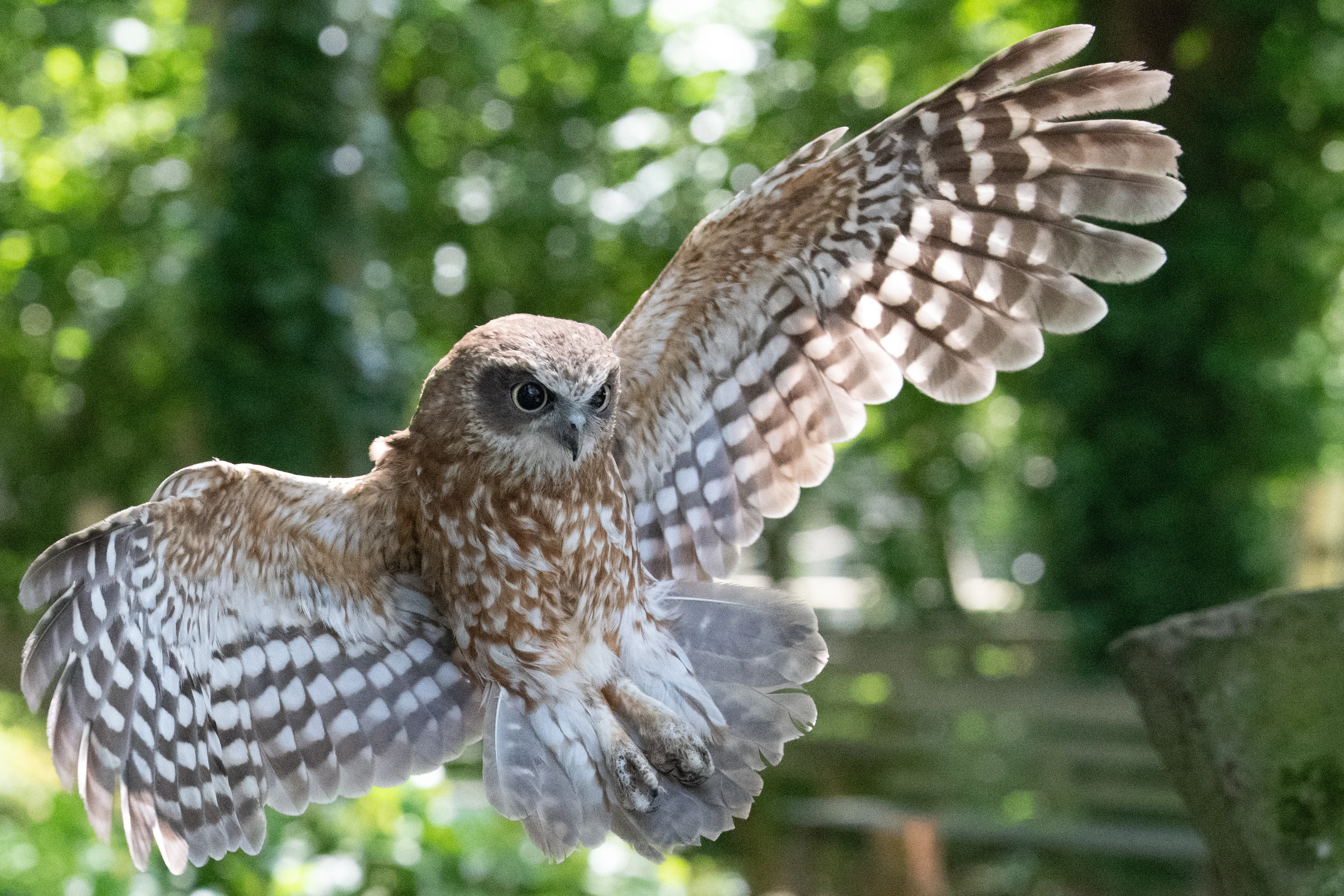Owls inspire more effective sound insulation
Owls inspire more effective sound insulation

Nanomaterial: Eulen sollen Autos leiser machen

cross-posted from: https://metawire.eu/post/176521
Nanomaterial: Eulen inspirieren zu wirksamerem Schallschutz
Die besondere Haut und die Federn an ihren Flügeln lassen Eulen fast lautlos fliegen. Ein Material, das die Flügel nachahmt, könnte für leisere Autos und Industrieanlagen sorgen.

Lovely Boobook stock photo they chose. 🥰
Tried to find a non-paywalled version of the full article without luck. The summary does give a quick look at the material layers.
I hadn't heard anything referencing owl skin as part of the silence equation before, so I had to search that up right away. In this paper that is available free, it discussed the typical wing proportions and feather structures that break down the large turbulences, but also mentioned not a porous skin, but a velvet-like wing coating they hypothesized could dampen sound from feathers rubbing on each other during flight.
So I'm not sure what we're losing in translation from Chinese to German to English here, but based on my non-expert opinion, I'd say after reading everything available the silicone nanofibers mimic that velvet skin cover and the aerogel is the structure made by interlocking feather barbules. This was interesting as it was the opposite of my first impression, as I'm used to the whispy leading and trailing wing edges being the focal point when discussing owl flight, but that would be nothing new. The paper I linked referenced studies of that nature back in the 70s.
As an aside, the juvie Great Horn I've been working with is starting to fly but doesn't have all its adult feathers in, and when it flies next to me, it is certainly not what I'd call quiet! Its neighbor the Cooper's Hawk is about the same volume, though it is a sharper and snappier sound.
To be fair though to the GHO, when it would be hunting, I think it is more dive and glide than flapping, which would greatly reduce the sound generated. Even though its flapping is not quiet, it's mainly just the sound of a large mass of air being moved than shall we say mechanical noise like with the hawk.
My normal reference is to a CPU cooler fan. A larger fan is quieter for the same volume of air because it's able to do so at a lower rpm. Owls have big wings for their size so they can fly equally well while flapping less. The other micro-features surely enhance it further still, but being able to not flap near as much as other birds I feel is immensely helpful to staying quiet.
Reminder I'm not a scientist or engineer, but I do read a ton on owls and have some basic hands on experience with my silent-ish feather friends, so don't take any of this as anything more than anecdotal experience. 😇
Oh, and thank you so much for sharing!
Very interesting! Also I’d imagine owl noises would be within a pretty specific range - 500-2000Hz say. But as you got to lower frequencies with bigger sound waves, I’d think the nano-aero-fiddly-bits would lose some effectiveness.
Oh my, don't get me distracted running sound meters on my work owls now! 🤣